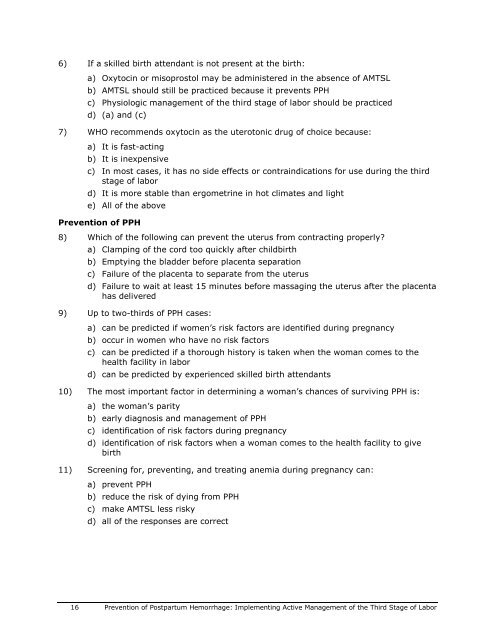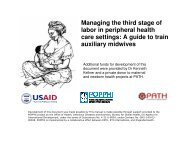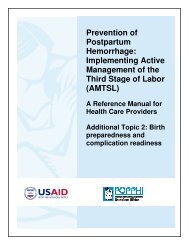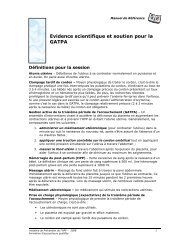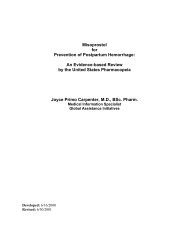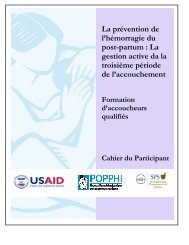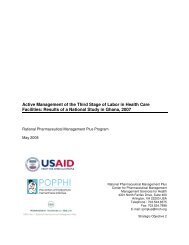Prevention of Postpartum Hemorrhage: Implementing ... - POPPHI
Prevention of Postpartum Hemorrhage: Implementing ... - POPPHI
Prevention of Postpartum Hemorrhage: Implementing ... - POPPHI
You also want an ePaper? Increase the reach of your titles
YUMPU automatically turns print PDFs into web optimized ePapers that Google loves.
6) If a skilled birth attendant is not present at the birth:a) Oxytocin or misoprostol may be administered in the absence <strong>of</strong> AMTSLb) AMTSL should still be practiced because it prevents PPHc) Physiologic management <strong>of</strong> the third stage <strong>of</strong> labor should be practicedd) (a) and (c)7) WHO recommends oxytocin as the uterotonic drug <strong>of</strong> choice because:a) It is fast-actingb) It is inexpensivec) In most cases, it has no side effects or contraindications for use during the thirdstage <strong>of</strong> labord) It is more stable than ergometrine in hot climates and lighte) All <strong>of</strong> the above<strong>Prevention</strong> <strong>of</strong> PPH8) Which <strong>of</strong> the following can prevent the uterus from contracting properly?a) Clamping <strong>of</strong> the cord too quickly after childbirthb) Emptying the bladder before placenta separationc) Failure <strong>of</strong> the placenta to separate from the uterusd) Failure to wait at least 15 minutes before massaging the uterus after the placentahas delivered9) Up to two-thirds <strong>of</strong> PPH cases:a) can be predicted if women’s risk factors are identified during pregnancyb) occur in women who have no risk factorsc) can be predicted if a thorough history is taken when the woman comes to thehealth facility in labord) can be predicted by experienced skilled birth attendants10) The most important factor in determining a woman’s chances <strong>of</strong> surviving PPH is:a) the woman’s parityb) early diagnosis and management <strong>of</strong> PPHc) identification <strong>of</strong> risk factors during pregnancyd) identification <strong>of</strong> risk factors when a woman comes to the health facility to givebirth11) Screening for, preventing, and treating anemia during pregnancy can:a) prevent PPHb) reduce the risk <strong>of</strong> dying from PPHc) make AMTSL less riskyd) all <strong>of</strong> the responses are correct16 <strong>Prevention</strong> <strong>of</strong> <strong>Postpartum</strong> <strong>Hemorrhage</strong>: <strong>Implementing</strong> Active Management <strong>of</strong> the Third Stage <strong>of</strong> Labor


